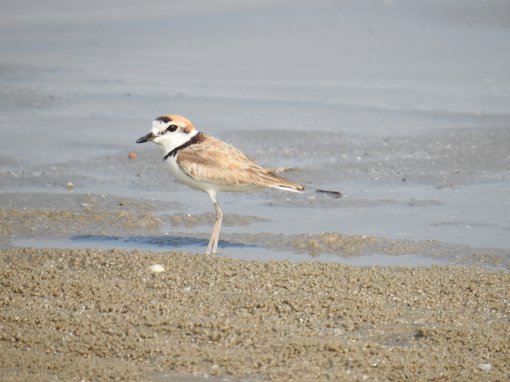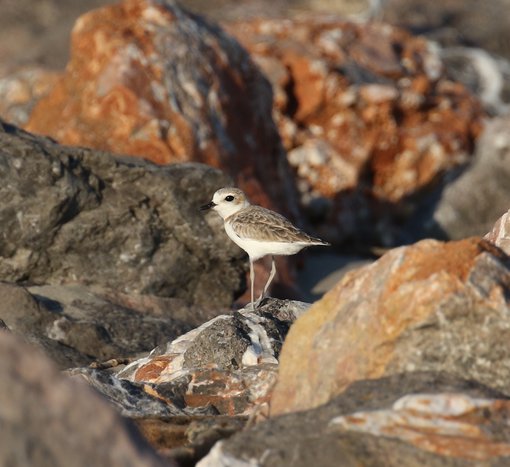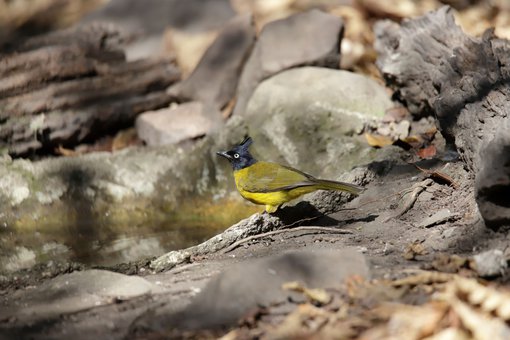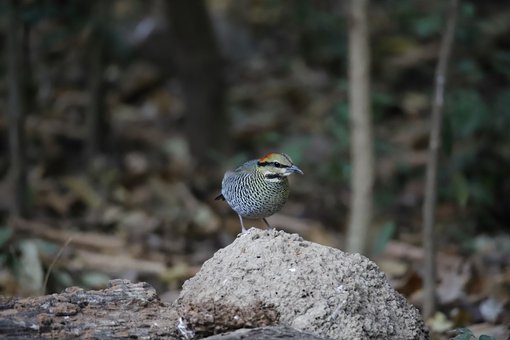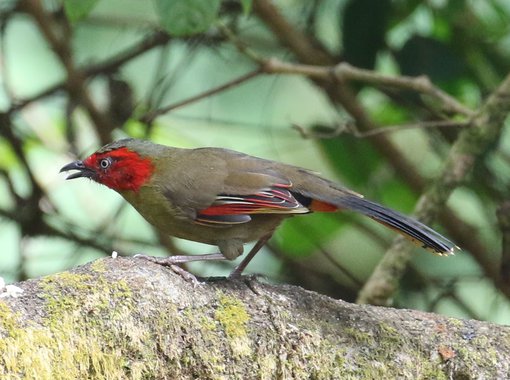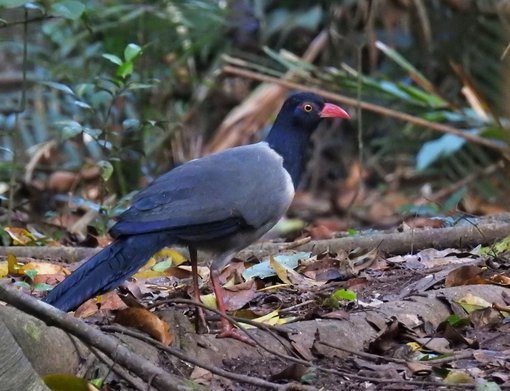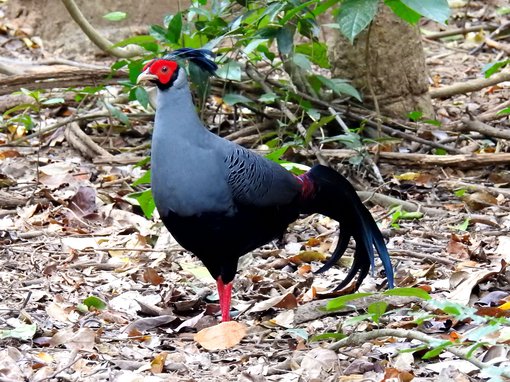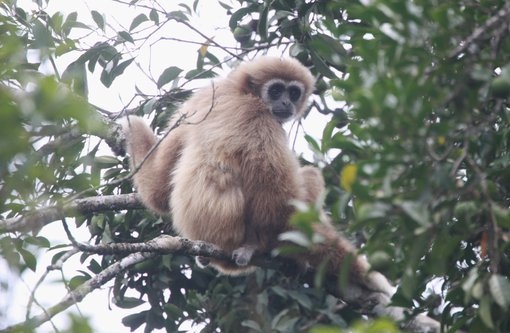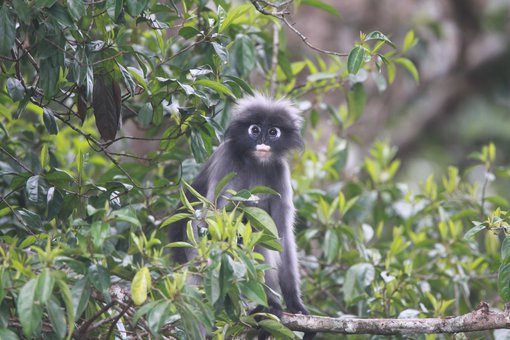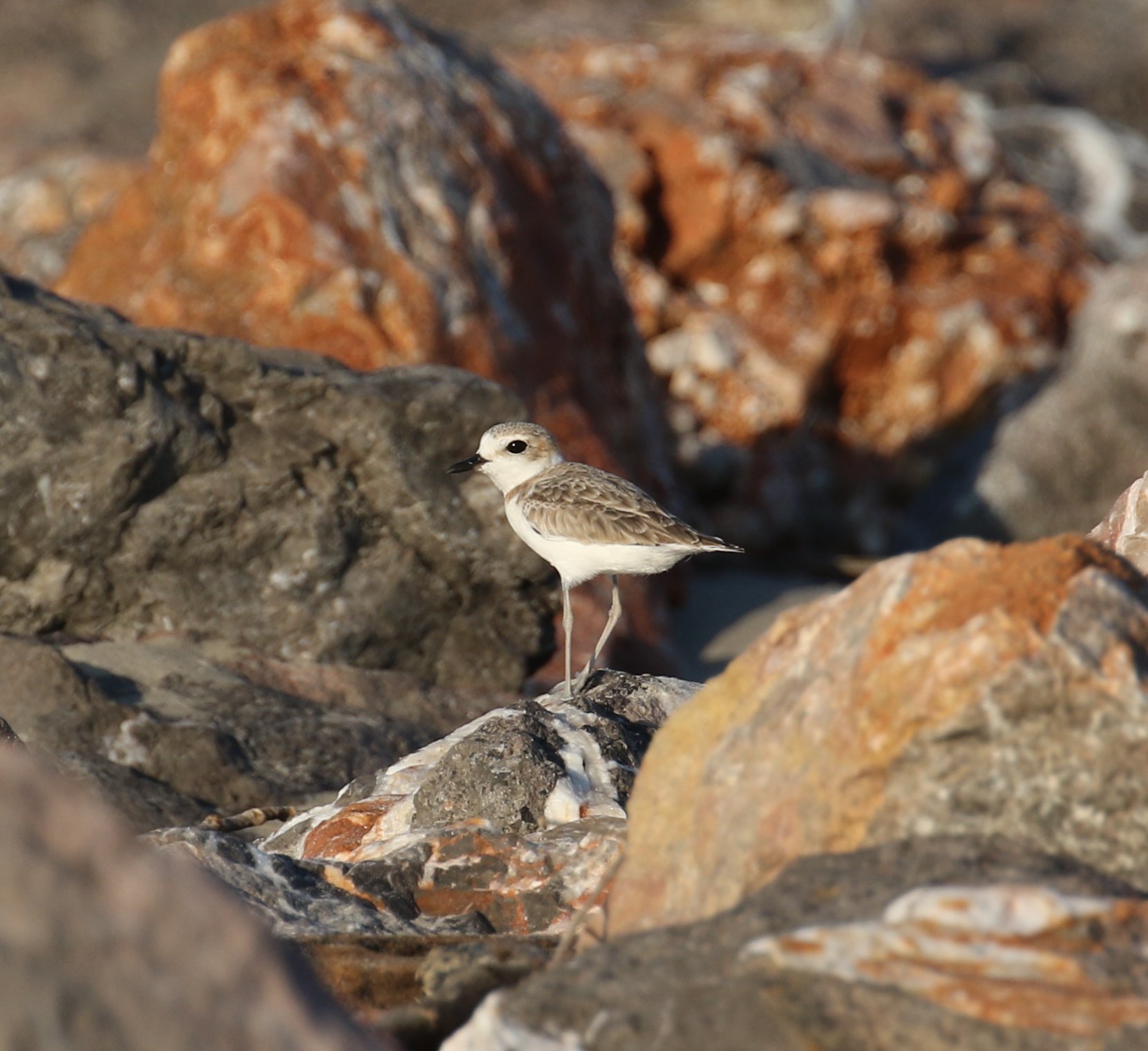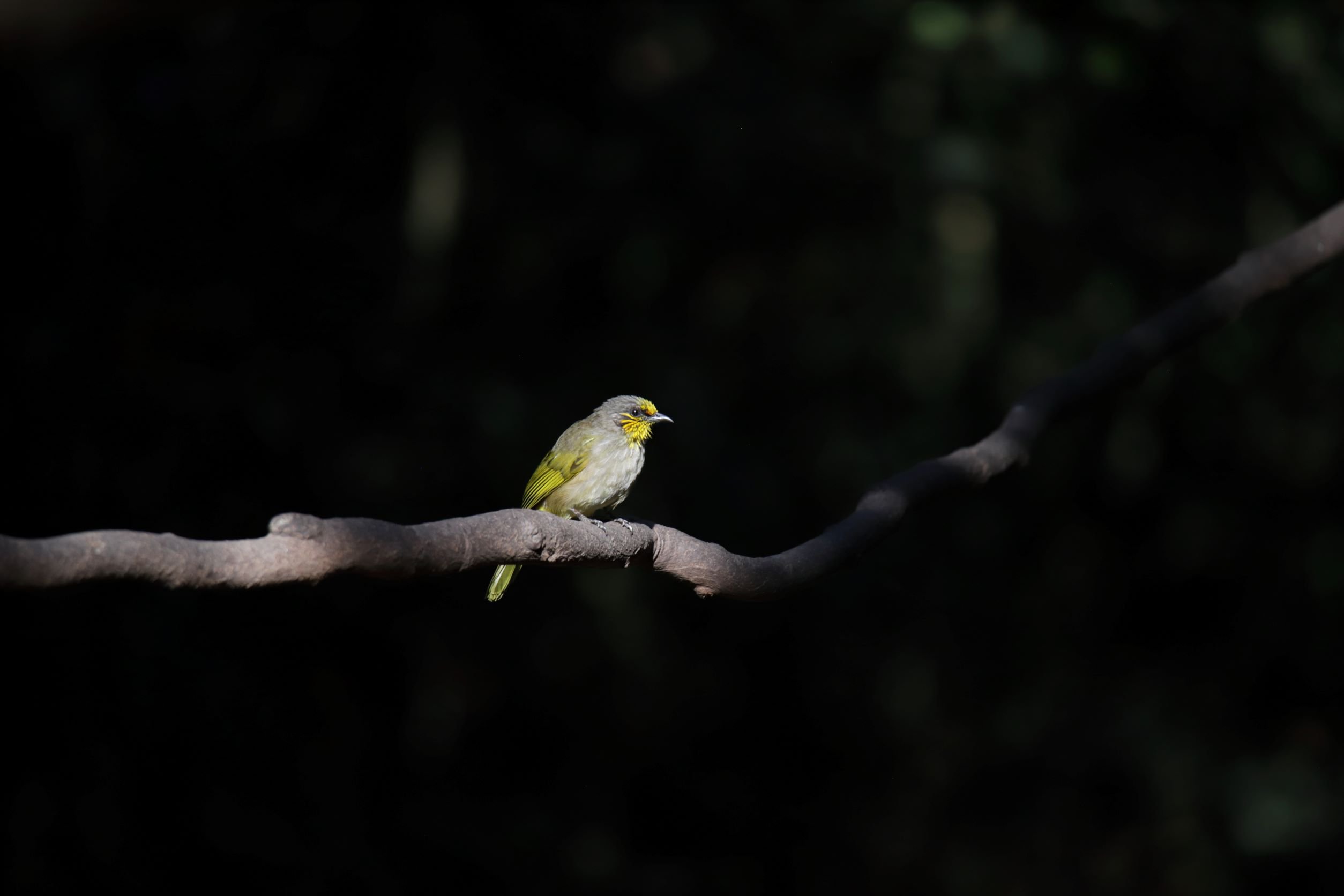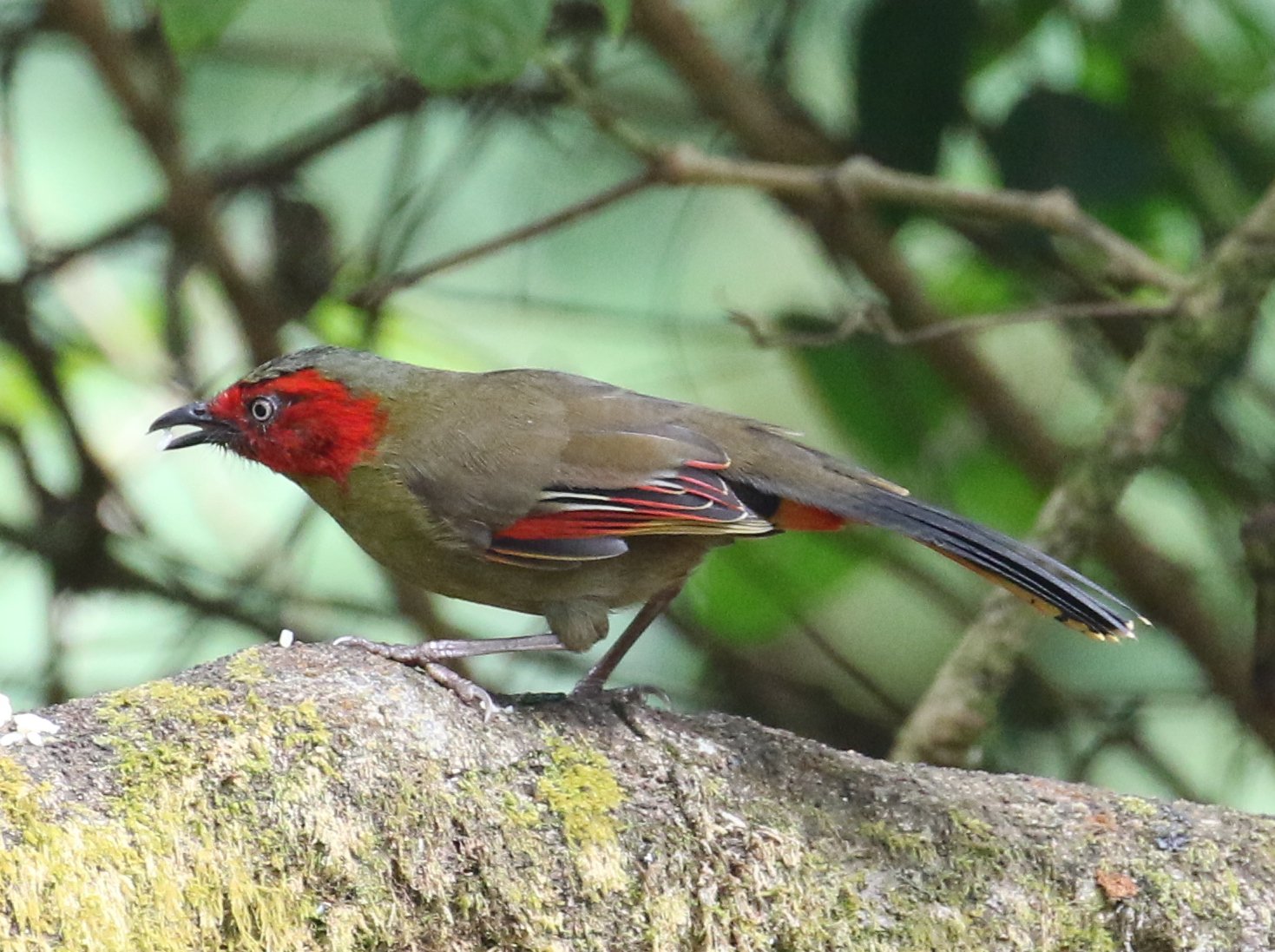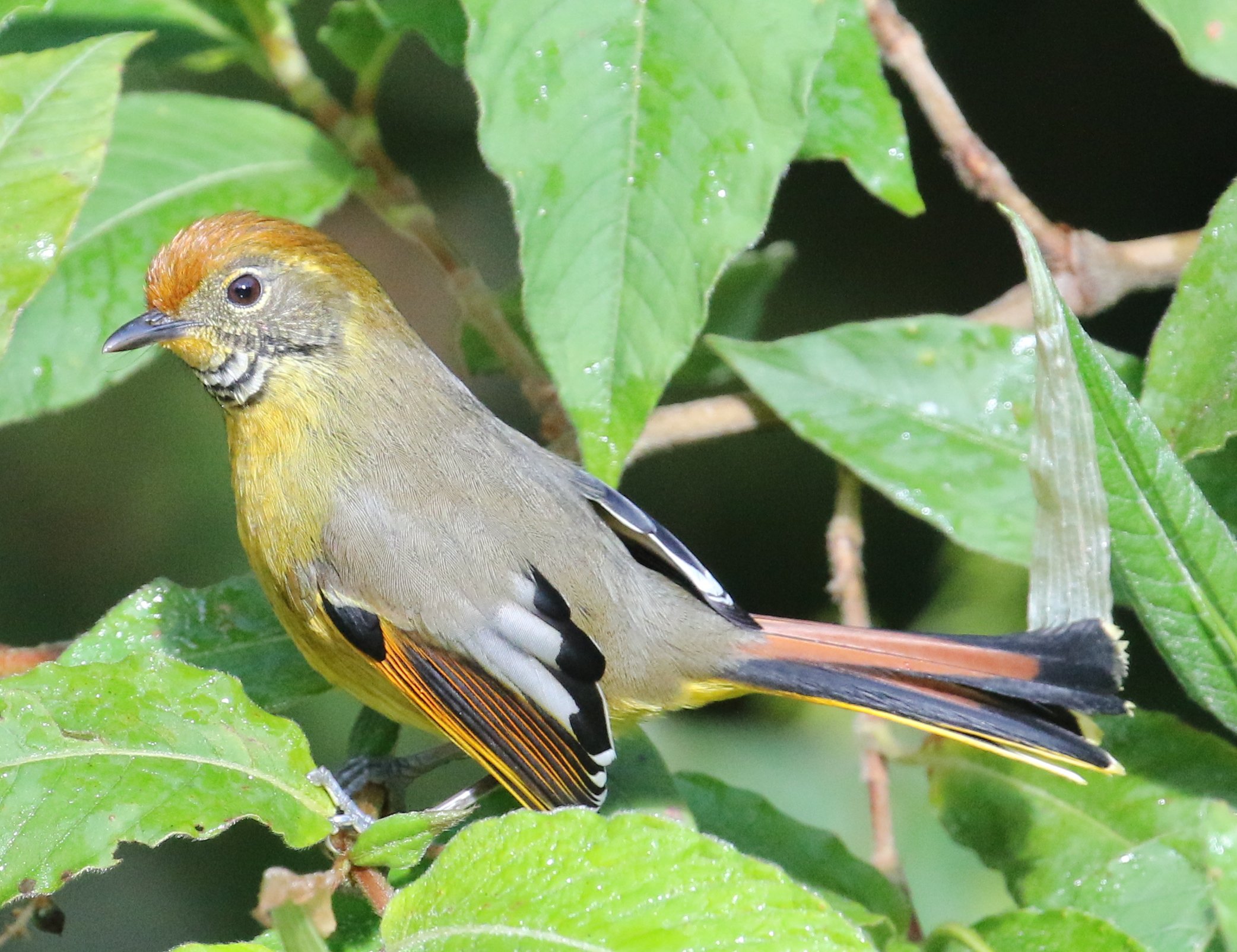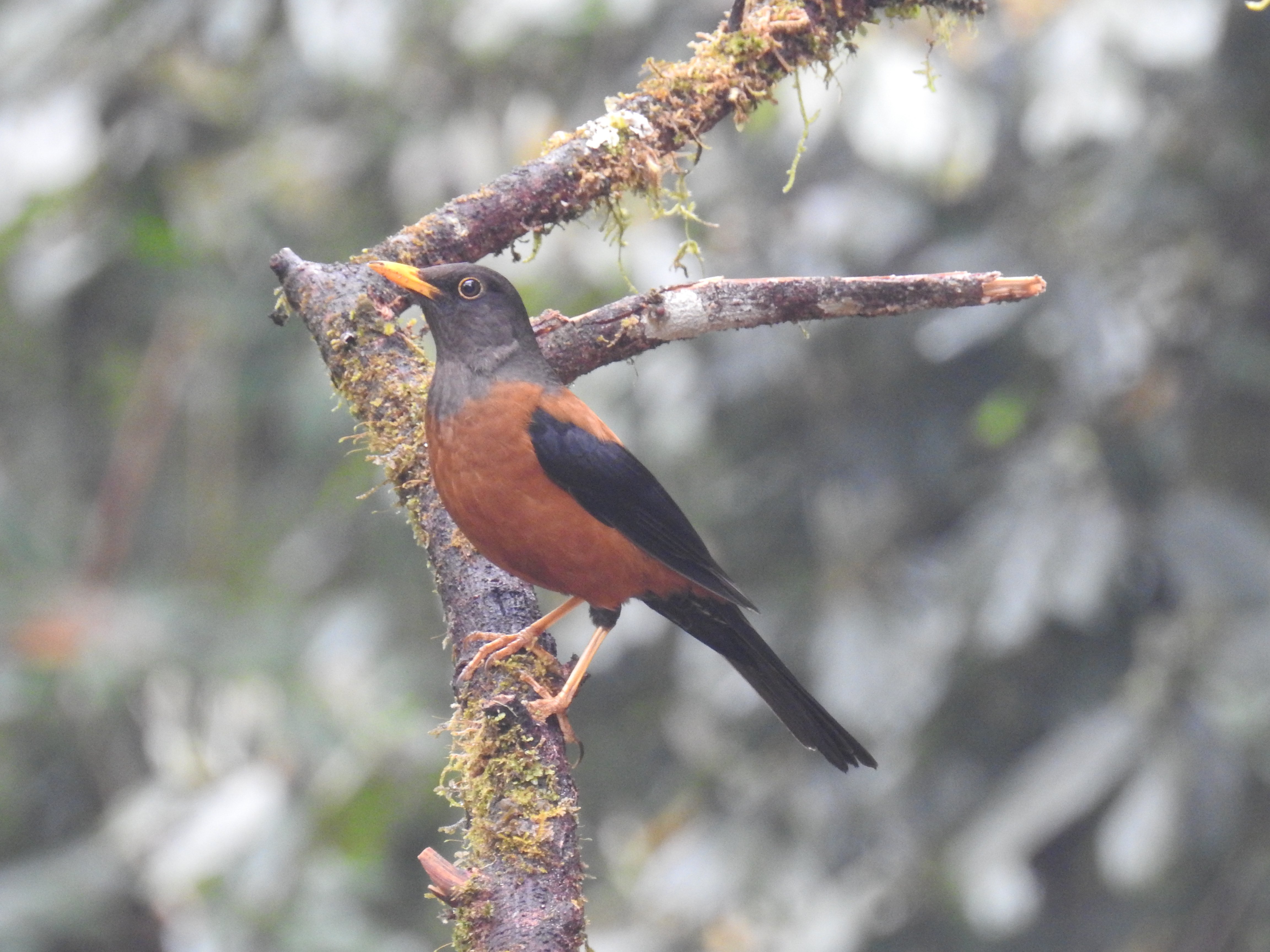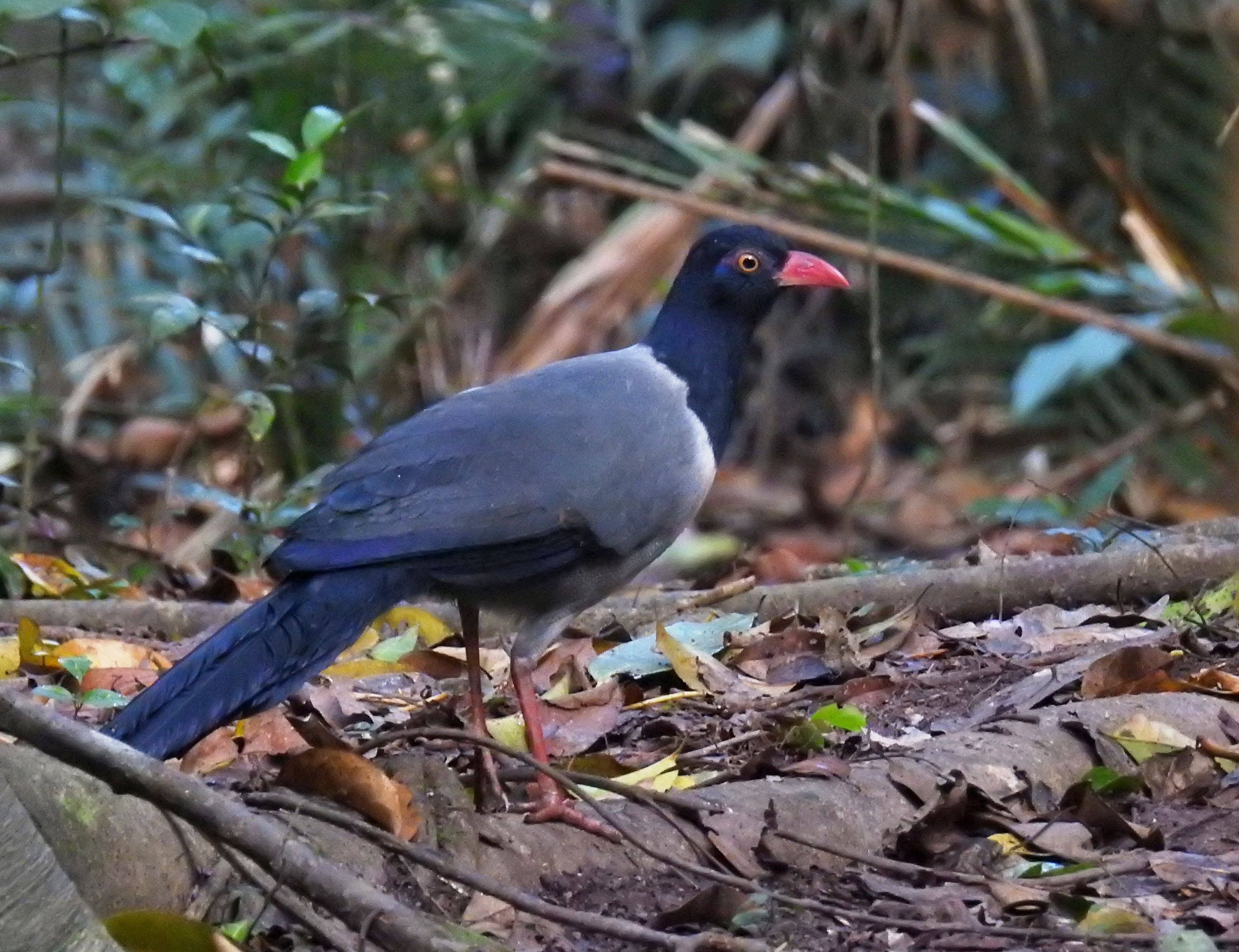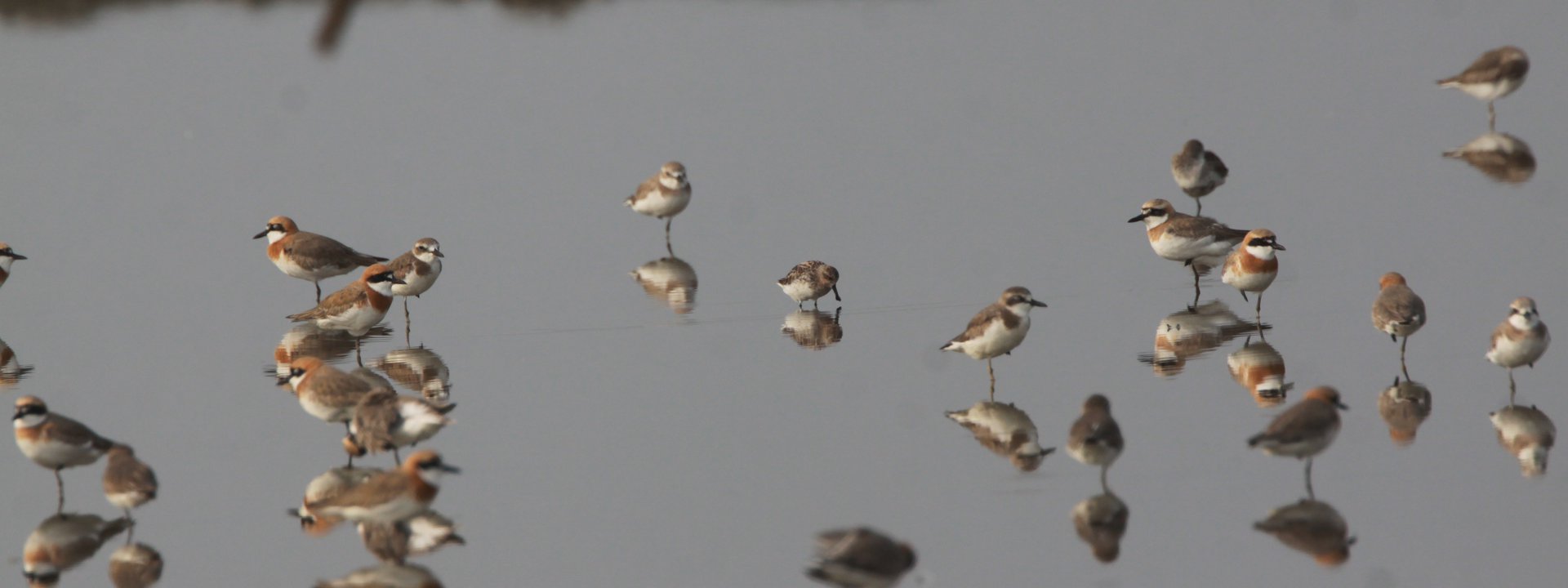Thailand
Kaeng Krachan, Gulf coast, Khao Yai and Northern mountains
A fantastic 17-day holiday visiting many of the best sites in Thailand from the coastal mudlfats to Thailand's highest mountain
Limosa's birdwatching tour to Thailand combines many of the premier sites in Central and Northern Thailand to offer you a spectacular holiday in a country which is rich in birds and other wildlife.
Starting in one of Thailand's most famous national parks, Kaeng Krachan, we will look for birds at a variety of different elevations with the possibilities including Kalij Pheasant, Grey Peacock Pheasant, Orange-breasted Trogon, Blue-bearded Bee-eater and Great Hornbill.
We will then have a two-night stay on the Gulf of Thailand where we will look for the critically endangered Spoon-billed Sandpiper, as well as Nordmann’s Greenshank, Asian Dowitcher and a host of other shorebirds.
Heading inland to another of Thailand's fantastic national parks, Khao Yai, we will explore the trails and quiet roads in our search for a fantastic range of forest woodpeckers, barbets, kingfishers, bee-eaters, broadbills, trogons, orioles and leafbirds with the possibility of also finding some great mammals including Asian Elephant.
We then head north to the forested mountains of Northern Thailand where over the next seven days, we will visit the national parks of Doi Lang, Doi Ang Khang and the country's highest mountain reserve, Doi Inthanon. There are many new species to look for including specialities such Mrs Hume’s Pheasant, Green Peafowl, Giant Nuthatch, Maroon Oriole, Orange-bellied Leafbird and Scarlet-faced Liocichla to name but a handful of the birds we hope to see.
With the author of the Lynx Editions field guide to Thailand (Wich’yanan Limparungpatthanakij) as one of your guides, you truly will be led by one of Thailand's leading bird experts. Indeed, on one of his recent tours for us, 'Jay' (his nickname) was described by one of our well-travelled clients as "the best guide we have travelled with".
Tour Dates & Prices
Thu 2nd January 2025
Sat 18th January 2025
- Available
Tour Cost: 17 Days from £4895 excluding flights
What's Included?
- Expert English-speaking Thai bird guide
- Derek Barber (Limosa) will co-lead the holiday if the group is six clients or more
- 14 nights' accommodation in Thailand
- All main meals with drinking water included
- Transportation by air-conditioned minibus
- Boat trip at Laem Pak Bia
- All excursions, entry fees, permits, local guides, tour-based tips and taxes
- Limosa checklist of birds
Cost Excludes
International and domestic flights, insurance, drinks, airport meals, snacks and other items of a personal nature.
Notes
The Land Only Tour Cost is the amount you will pay Limosa.
Despite the end of pandemic restrictions, we have taken the decision to continue to price our holidays as excluding international flights.
To keep the process as simple as possible, we are working very closely with a dedicated agent at Travel Counsellors, Sacha Barbato, who is essentially now our “in house” flight consultant.
Sacha is a highly experienced independent ATOL bonded travel agent, and his contact details are as follows: sacha.barbato@travelcounsellors.com and 01603 360099
He will be able to advise you which flights we are recommending for each holiday and will be able to book these for you.
This will also sometimes give you the option to travel from a regional airport if you prefer.
Tour Highlights
- Superb introduction to the amazing birdlife of Thailand
- Abundance of resident Thai birds and outstanding for wintering shorebirds
- Two nights on the coast looking for Spoon-billed Sandpiper, Nordmann’s Greenshank and Asian Dowitcher
- Three nights at both Kaeng Krachan and Khao Yai, exploring the tropical forests of these impressive national park looking for Siamese Fireback, Silver Pheasant, Kalij Pheasant, Grey Peacock Pheasant, Great Eared Nightjar, Black-throated Laughingthrush, Orange-breasted Trogon and Tickell’s Brown Hornbill
- Six nights in the north visiting Doi Lang, Doi Ang Khang and Doi Inthanon for Pied Harrier, Mrs Hume’s Pheasant, Giant Nuthatch and Maroon Oriole
- Expertly led by Limosa’s Wich’yanan Limparungpatthanakij ("Jay") and, subject to minimum numbers, Derek Barber
Outline Itinerary
Depart UK for Bangkok
Arrival in Bangkok and transfer to Kaeng Krachan (3 nights)
Kaeng Krachan National Park
Transfer to Phetchaburi - afternoon boat trip to Laem Pak Bia or Pak Thale for Spoon-billed Sandpiper and other waders (2 nights)
Pak Thale or Laem Pak Bia
Head northeast to Khao Yai National Park. Khao Yai (3 nights)
Khao Yai National Park
Return to Bangkok. Fly to Chiang Rai. Transfer to Thaton. (3 nights)
Doi Lang and nearby areas
Transfer to Doi Inthanon via Doi Ang Khang (3 nights)
Doi Inthanon National Park
Morning at Doi Inthanon National Park. Fly to Bangkok and connect with overnight flight to UK
Arrive UK

Central and Northern Thailand offers a superb introduction to the amazing avifauna of Southeast Asia and our carefully planned itinerary visits five key areas giving the opportunity to see a spectacular range of species.
After arriving in Bangkok, we will drive to the tropical forests of Kaeng Krachan National Park where there are impressive range of species to look for. Kaeng Krachan is, for example, home to an impressive number of colourful broadbills and we will look for Black-and-Red, Black-and-Yellow, Banded, Silver-breasted and Long-tailed. Both Kalij Pheasant and Grey Peacock-Pheasant are present and if we find some fruiting trees, these can act as a real magnet for orioles, barbets and hornbills which flock to feed on the bounty with chances for Great, Oriental Pied, Wreathed and Tickell’s Brown Hornbills amongst a multitude of frugivores.
Kaeng Krachan also boasts an impressive mammals list and we should see the gorgeous Dusky and Banded Langurs, White-handed Gibbon and the impressive Black Giant Squirrel and there is a fair chance of Asian Elephant. Both Sun Bear and Leopard also occur, although we would be extraordinarily lucky to encounter either of these.
After two full days at Kaeng Krachan, we will reluctantly leave this fantastic national park and head a relatively short distance back eastwards to spend a couple of nights near the coast where we will visit the very different habitats of Pak Thale and the Laem Pak Bia sandspit. During the winter months, this area is home to an amazing range of shorebirds including the critically endangered Spoon-billed Sandpiper. The mudflats and saltpans around Pak Thale are probably the most readily accessible site anywhere in the world to look for this charismatic wader, although sadly the numbers are now incredibly low with only one bird found here during the early part of winter 2023/24.
The highly endangered Nordmann’s Greenshank also occurs here and other waders we hope to find include Asian Dowitcher, Great Knot, Terek Sandpiper and both Red-necked and Long-toed Stints. During our stay, we also plan to take a boat trip to the Laem Pak Bia sandspit where we will look for Malaysian Plover and White-faced Plover, with the latter only recognised as a good species in recent years.
Leaving the coastal lowlands behind, we will then drive to another of Thailand's excellent National Parks, the highly renowned Khao Yai. We plan to stay in a hotel close to one of the entrances to allow us access early each morning and there is an excellent network of roads and trails we will use to explore this bird-rich location. The list of birds which have been recorded at the park runs to over 300 and we will aim to see as many as possible during our stay with the possibilities including Coral-billed Ground Cuckoo, Silver Pheasant, Siamese Fireback, Blue Pitta and Austen’s Brown Hornbill.
Returning to Bangkok, we will then fly north to Chiang Rai in the far north, where we will start by exploring the upland oak and pine forests of Doi Lang and Doi Ang Khang. This scenic mountainous region on the border with Myanmar holds many localised species and the possibilities include the elusive Mrs Hume’s Pheasant and rare Giant Nuthatch, as well as White-browed Shrike-babbler, Maroon Oriole, Rusty-cheeked Scimitar-Babbler, Spot-breasted Parrotbill and Ultramarine Flycatcher among a long list of possibilities. The beautiful Orange-bellied Leafbird and Scarlet-faced Liocichla also occur, along with a good selection of Palearctic migrants.
Our trip will then conclude with two full days visiting the forested slopes of Doi Inthanon, Thailand’s highest mountain (2,565m/8,415ft). The list of birds which can be found here is long and includes many specialities and the avifauna is very different from what we have seen further south. On Doi Inthanon’s upper slopes, for example, we will search for birds such as Pygmy Cupwing, Bar-throated Minla, Ashy-throated Warbler and Green-tailed and Mrs Gould’s Sunbirds, whilst lower down the mountain, we could encounter White-rumped Falcon or Slaty-backed Forktail. We will also hope to find some of the less frequently seen species such as Rufous-throated Partridge, Green Cochoa or Dark-sided Thrush.
Thailand's tropical climate is at its best during the winter months and with good accommodation, excellent guides and delicious local cuisine throughout, this winter holiday offers a comprehensive tour in what is undoubtedly one of the best countries in Southeast Asia for birds.

Day 1
DEPART UK FOR BANGKOK
Our birdwatching tour to Thailand commences with an overnight flight to Bangkok.
Day 2
TRANSFER TO KAENG KRACHAN NATIONAL PARK
We will meet our local guide ‘Jay’ at the airport and then transfer to Kaeng Krachan and we should arrive with time to begin our exploration of this fantastic forest reserve. Night at Baan Maka
Days 3-4
KAENG KRACHAN NATIONAL PARK
We have two full days to explore Kaeng Krachan and the area around this exciting national park. Roads within the park mean we should be able to explore different elevations and can expect to see a number of species we are unlikely to find later in our trip. The possibilities include Kalij Pheasant, Grey Peacock Pheasant, Crested Serpent Eagle, Changeable Hawk Eagle, Wedge-tailed Green Pigeon, Green-billed Malkoha, Asian Barred Owlet, Great-eared Nightjar, Large-tailed Nightjar, Orange-breasted Trogon, Blue-bearded Bee-eater, Oriental Pied Hornbill, Great Hornbill and Tickell’s Brown Hornbill.
There are also a number of privately run hides close to the park and we may visit one or more of these, as they sometimes provide an opportunity to get views of (and photograph) a number of tricky forest species which we are unlikely to see elsewhere, with one possibility, for example, being the stunning Ferruginous Partridge. Two further nights at Baan Maka
Day 5
KAENG KRACHAN NATIONAL PARK TO PHETCHABURI
We may have time for some final birding around Kaeng Krachan before we set off for the relatively short drive (c.2-3 hours) to Phetchaburi on the shores of the Gulf of Thailand where we have a two-night stay. This area is arguably one of the best in the world for shorebirds during the winter months and the diversity of species is incredible.
The combination of intertidal mudflats, saltpans, shrimp and fish ponds is perfect for both resident species which are joined every winter by a host of migrants and topping the bill is one of one of the world’s rarest and most charismatic waders, the extraordinary and critically endangered Spoon-billed Sandpiper.
Now thought to probably only number 150 pairs in the world, a handful of individuals have traditional spent the winter months here before heading back to the Russian Far East to breed, however, tragically the numbers seem to still be declining despite extensive efforts to help this amazing bird. By sifting through the flocks of Red-necked Stints and other species, we will do our best to find one of these special birds but there are plenty of other species to see including another highly endangered shorebird, the Nordmann’s Greenshank.
Like the Spoon-billed Sandpiper, this species has declined alarmingly, and latest estimates suggest that there may not be more than 1-2,000 individuals. Two nights at Phetchaburi
Day 6
PAK THALE, BOAT TRIP TO LAEM PAK BIA AND MANGROVES
We will continue our exploration of the habitats around Phetchaburi and as well as these two special species mentioned above, we will also hope to see a spectacular range of other waders including Red-necked and Long-toed Stints, Greater and Tibetan Sand Plovers (the latter a 'new' species after the recent split of Lesser Sand Plover), Pacific Golden Plover, Broad-billed, Marsh and Terek Sandpipers, Great Knot and hopefully the rare Asian Dowitcher.
During our stay, we also plan to take a relaxing boat trip passing mangroves, mudflats and sand bars where we can expect to see Pacific Reef Egret, Striated Heron, Brown-headed Gull and Greater Crested, Lesser Crested and Caspian Terns. Our ultimate destination is a secluded sandy spit where, having paddled ashore, we have chances of finding the rare and localised Malaysian Plover as well as the recently rediscovered White-faced Plover - the latter is a somewhat enigmatic bird which most authorities now regard as a full species.
Herons, egrets and terns are numerous in the coastal wetlands that fringe the Gulf of Thailand, and we will also hope to find the rare Chinese Egret during our boat trip. Collared and Black-capped Kingfishers hunt for crabs amongst the mangroves as striking chestnut, black and white Brahminy Kites patrol lazily overhead. With Blue-tailed Bee-eater, Golden-bellied Gerygone (Flyeater), Malaysian Pied Fantail, Siamese Pied Myna, Great Myna, Brown-throated and Olive-backed Sunbirds also likely, there should be plenty to enjoy.
Day 7
PHETCHABURI TO KHAO YAI NATIONAL PARK
We may have time for some final birding around Pak Thale before we set off for the drive to another of Thailand's premier birding sites, the forested national park of Khao Yai.
Although it is only 150 miles or so in a straight line from Kaeng Krachan, there is a surprisingly different avifauna and we can expect to see a number of species we are unlikely to see on other parts of our trip.
We may make one or two short birding stops at some freshwater swamps and paddies along the way, looking for species such as Greater Spotted and Eastern Imperial Eagles, Pied Harrier, Cinnamon and Yellow Bitterns, Cotton Pygmy Goose, Pheasant-tailed Jacana as we skirt around Bangkok and across the predominantly flat agricultural plain of the interior.
Khao Yai is Thailand’s oldest and best-known national park and it rises from the plains to just over 1,350m (c.4,400ft). The limestone hills are cloaked in superb dry evergreen and mixed deciduous forests.
We have three nights, staying at a comfortable hotel located within a short distance of the entrance to this fine park. Night at Khao Yai
Days 8-9
KHAO YAI NATIONAL PARK
Set amidst spectacular scenery, our hotel is the ideal base from which to really get to know Khao Yai. Covering more than 540,000 acres, the park is exceptionally beautiful and was designated a UNESCO World Heritage Site in 2005.
We plan to spend much of our time birding along roadsides and trails within the forests and the birds here are many and varied.
The reserve is, for example, home to several species of hornbills including Wreathed, Oriental Pied and the huge Great Hornbill and we may well hear the 'swish' of their wings as they fly overhead.
The very names of some of the other species here will make us want to see them with the possibilities including Vernal Hanging Parrot, Changeable Hawk-eagle, Asian Fairy Bluebird, Scarlet Minivet, Blue Whistling Thrush, Black-naped Monarch and Little Spiderhunter among a wealth of exciting species.
Khao Yai’s forests are also home to a wonderful array of other animals. Asian Elephant, Sambar, Black Giant Squirrel, Common Palm Civet and Pig-tailed Macaque can all be found, while the whooping calls of White-handed Gibbons is a sound which will live in your memory.
Exploring along the trails and walking the roads, we will go in search of a fantastic range of forest woodpeckers, barbets, kingfishers, bee-eaters, broadbills, trogons, orioles and leafbirds. Key species we shall be especially watching out for include stunning Red-headed and Orange-breasted Trogons, Banded and Long-tailed Broadbills, Banded Kingfisher, Blue-bearded Bee-eater and Greater Flameback.
We will also hope to find some of the elusive species which inhabit the forests with Silver Pheasant and very shy Coral-billed Ground Cuckoo being two possibilities. Pittas are also possible and seeing an amazing Blue Pitta scratching through the leaf litter is something you are unlikely to forget in a long time!
In the more open areas, we may get a chance to see Brown-backed and Silver-backed Needletails swoop down to snatch a quick drink from the surface of a lake and at dusk will hope to find Great Eared Nightjars as they whistle plaintively like plovers and float harrier-like against the evening sky. Two further nights at Khao Yai
Day 10
KHAO YAI TO BANGKOK, FLY TO CHIANG RAI AND TRANSFER TO THATON
We will reluctantly leave the wonderful Khao Yai after breakfast and return to Bangkok from where we fly to Chiang Rai in northern Thailand. It should take a couple of hours to reach our comfortable resort hotel on the Maekok river where we stay for three nights and if time allows we will begin our exploration of the area. Three nights at Thaton
Days 11
DOI LANG AND SURROUNDING HABITATS
The forested mountains of Northern Thailand extend across the border into neighbouring Myanmar and are rich in birdlife. The birding opportunities are even better during the winter months, when the region’s numerous resident specialities are joined by an influx of migrant birds from Northern Asia. Possibilities include Brown Shrike, Dusky Warbler, Eyebrowed and Black-breasted Thrushes and the prospect of getting to grips with an excellent selection of these over the coming days makes this a spectacular part of the world to visit!
To make the most of our stay, we plan to make an early start driving towards the summit of Doi Lang. Set at an elevation of more than 2,000m (6,500 feet), the birding here is superb and well worth the effort.
After a picnic breakfast, we may sit and watch for birds coming into small ‘feeding stations’ that have been specifically set up for them. We should encounter many species with Rufous-throated Partridge, Scarlet-faced Liocichla, Silver-eared Laughingthrush, Grey-winged Blackbird, Striated Yuhina and Spectacled Barwing among the possibilities.
Gradually working our way back down the mountain, we have the chance for more great views of new species: White-gorgeted and Rufous-gorgeted Flycatchers, Chestnut-headed Tesias and both Himalayan and Red-flanked Bluetails. The scarce Crested Finchbill can be locally common here and we may also find Necklaced Woodpecker, Whiskered Yuhina and White-bellied Redstart.
As well as great birding, there are spectacular views from the escarpment over the Burmese Highlands. This is a seldom visited and poorly known corner of Thailand, with much still to be discovered and we might be lucky to spot one or two of the rarer or more difficult-to-find species such as Mrs Hume's Pheasant, Himalayan Cutia, Red-tailed Laughingthrush or Scarlet Finch.
Day 12
DOI LANG AND MAE AI / THANTON PADDIES
We plan to spend at least another morning on the forested slopes of Doi Lang and will concentrate on looking for any species we have not seen.
In the afternoon, we may visit a more open area such as Mae Ai or Thanton paddies. Both hold an excellent range of wetland birds as well as species associated with more disturbed habitats and possibilities include Red-collared Dove, Himalayan Swiftlet, Chinese Pond Heron, Rufous-winged Buzzard, Eastern Marsh Harrier, Chestnut-headed Bee-eater, Indochinese Roller, Long-tailed Minivet, Ashy Woodswallow, Long-tailed Shrike, Lanceolated Warbler, Grey-crowned Warbler, Siamese Pied Myna, Verditer Flycatcher, Eastern Yellow Wagtail and Paddyfield Pipit.
We will also hope to find the critically endangered Yellow-breasted Bunting. Numbers of this once common bird have collapsed in recent years (some suggestions are that the population may have fallen by over 99% since the 1980s) but there were seventy birds at Mae Ai during the early part of 2023 and finding this species will be one of our goals.
Day 13
DOI ANG KHANG AND TRANSER TO DOI INTHANON
We will leave Thaton after breakfast for Doi Ang Khang where we plan to explore the scenic landscape which rises to a height of 1,500m (5,000ft). Although the forest cover has been reduced over the decades, Doi Ang Khang is now a National Park, and this once threatened environment is now protected and home to an excellent variety of forest birds.
In Doi Ang Khang’s pine-oak woodlands, we will looks for Short-billed and Long-tailed Minivets, Chestnut-flanked White-eyes and Yunnan Fulvettas, the 'bandit-masked' Slender-billed Oriole and gaudy Mrs Gould’s Sunbird. Other specialities here include Brown-breasted Bulbul, White-browed Laughingthrush and Rusty-cheeked Scimitar-Babbler and if we are very fortunate, the scarce and elusive Giant Nuthatch might also put in an appearance.
If time allows, we may visit a feeding station where Black-breasted and Eyebrowed Thrushes, Grey-winged Blackbird and White-capped Redstart are all possible. Black-throated and Spot-breasted Parrotbills (the latter being distinctly ‘parrot-billed’) can also be found and with wintering species from further north also present, there is always the chance of turning up a surprise or two anywhere in these border hills.
We will then continue south towards Doi Inthanon where we have three nights at a comfortable hotel which has some excellent birding close by with possibilities including Indian Roller, Eurasian Hoopoe, Arctic Warbler and Purple Sunbird, while in the local woods and paddies Red-billed Blue Magpie and Golden-headed Cisticola are possible. Night near Doi Inthanon
Days 14-15
DOI INTHANON
We have two full days to explore Doi Inthanon and the surrounding area and will deliberately keep our itinerary a little flexible to maximise on the birding opportunities.
Doi Inthanon is a superb National Park on what is also Thailand’s highest mountain, with the summit rising to 2,565m (8,415ft). Encompassing more than 120,000 acres, this amazing place is not only fantastic for birds but arguably the best locality in northern Thailand to appreciate the succession of different habitats as one changes altitude. We will start in scrub and open, dry deciduous forest on the lower slopes, travel through montane evergreen forest to moist ‘cloud forest’ at the top. It will, therefore, come as no surprise that Doi Inthanon’s avifauna is equally varied and magnificent and our time here is sure to be highly rewarding!
The list of potential species is impressive and birds we will hope to see during our time here include Collared Falconet, Blossom-headed Parakeet, the diminutive and appropriately named Violet Cuckoo, Rufous Treepie, Blue-winged and Orange-bellied Leafbirds and Yellow-bellied Fantail. The highly sought-after but shy and seldom seen Green and Purple Cochoas are also present along with Large and Chinese Vivid Niltavas, Snowy-browed and Little Pied Flycatchers, Blyth’s Leaf and Chestnut-crowned Warblers, Silver-eared Laughingthrush (recently split from Chestnut-crowned), Silver-eared Mesia, Golden Babbler, Rufous-winged Fulvetta, Rufous-backed Sibia, Slaty-bellied Tesia, Yellow-browed and Yellow-cheeked Tits and the jewel-like Mrs Gould’s and Green-tailed Sunbirds.
Day16
DOI INTHANON, FLY CHIANG MAI-BANGKOK
We have time to enjoy a final morning of birding at Doi Inthanon, perhaps investigating the lower elevation forests. This area is home to the likes of Lineated Barbets and Greater Flamebacks, both Black-headed and White-bellied Woodpeckers, Black-hooded Oriole and Purple Sunbird and with luck, we might also come across the handsome Black Baza or a White-rumped Falcon to round off our birding in Northern Thailand in style!
After lunch, we head to the airport in nearby Chiang Mai and catch an afternoon flight back to Bangkok before connecting with a late evening flight back to the UK.
Day17
ARRIVE UK
We should arrive in the UK in the afternoon where our tour to Thailand concludes.

WHAT TO EXPECT
A 17 day, small group birding tour to Thailand, which includes time on the Gulf of Thailand looking for shorebirds including the critically endangered Spoon-billed Sandpiper. We will also explore two of the country's best national parks, Kaeng Krachan and Khao Yai, before flying to Chiang Rai and exploring some of the amazing forested mountains of the north of this bird rich country.
Early starts are the norm for birding tours in tropical regions, where the daylight hours are relatively short (in Thailand at this time of year approx. 6.30am-6.30pm), and where bird activity peaks early and late but generally dies away completely during the hotter middle of the day.
Especially in the sultrier lowlands, it will be important to be in the field at dawn so we can hear the birds singing and calling as the day starts up as in some instances, this may be our only chance to discover if certain species are present or not, so we will naturally want to make the most of this opportunity.
We may be on our feet for several hours at a stretch watching for birds so some participants may find it helpful to bring a lightweight collapsible stool.
Our guides will be able to advise you locally about the day's events. If you wish to opt out of a particular session or walk, don’t be afraid to ask them.
Thailand has a tropical climate and it will be warm to hot throughout most of the tour. The late winter is an excellent time to visit, when the weather is mostly hot, sunny and dry. It will be humid at lower elevations, especially near the coast. At this time of year, daily average temperatures around Bangkok are in the range of 22-33C (71-91F) but it may be a little cooler in the hills at Khao Yai, but still humid.
At higher altitudes towards the peak of Doi Inthanon, the conditions can range from warm to cool, and it can feel chilly at night. Overnight frosts are possible at the summit area at 2,565m (8,415 feet), where it may be cold first thing, though it warms up quickly once the sun is up.
Our tour is timed to run during Thailand's dry season, when rainfall is low but in the event it does happen to rain, this typically occurs as short-lived tropical downpours, so we recommend bringing a lightweight umbrella.
In common with all tropical regions, mosquitos are present throughout the year in Thailand, particularly around dawn and dusk in the coastal wetlands and mangroves, and along some low elevation forest trails so you are advised to check about malaria preventions.
At the time of our visit the forests are usually dry and there are rarely any leeches. Due to the dry conditions, ticks may be present along some trails passing through dry woodland.
Birds 350-425 species
Mammals 10-15 species
ACCOMMODATION
14 nights accommodation in good standard, comfortable and air-conditioned hotels and lodges. All rooms have western-style private facilities (not the traditional Oriental-style toilets).
At Doi Inthanon, the accommodation is more rustic, with wooden cottages with multiple bedrooms, but each room has a private bathroom. Most hotels can usually offer a laundry service.
MEALS
All main meals are included in the tour price (and with drinking water also provided), commencing with lunch on arrival in Thailand on Day 2 and concluding with lunch on Day 16.
Thai cuisine is delicious and for many travellers the food is a trip highlight. Breakfast and dinners will usually be taken at the hotels.
We may have packed lunches on some days (plus the odd packed breakfast) but other lunches may be taken at a convenient restaurant along the way.
WALKING
The walking effort is mostly easy. Away from the coast (where the terrain is flat), much of the birding on this tour is along roadsides, tracks and forest trails. The highest point on this tour will be at Doi Inthanon, where we shall be birding at altitudes of up to 2,565m (8,415 feet). Inevitably when walking in the mountains, there will be some steeper sections along the roads and tracks, although these are usually quite short and, wherever possible, we will aim to drive uphill and bird as we walk back down.
Comfortable, lightweight walking shoes or boots with stout soles and good grip are recommended.
BOAT TRIP
If the tide is right (and we haven’t missed out yet), we will take a boat trip at the coast, passing through the creeks and mangroves, and out to the sand spit at Laem Pak Bia to look for shorebirds, hopefully including the rare and localised Malaysian Plover as well as White-faced Plover.
GROUND TRANSPORT
By air-conditioned minibus.
FLIGHTS
Despite the end of pandemic restrictions, we have taken the decision to continue to price our holidays as excluding international flights.
To keep the process as simple as possible, we are working very closely with a dedicated agent at Travel Counsellors, Sacha Barbato, who is essentially now our “in house” flight consultant.
Sacha will be able to advise you which flights we are recommending for each holiday, and he will be able to book these for you.
This will also sometimes give you the option to travel from a regional airport if you prefer.

Tour Gallery
View a gallery of images for this tour below, click on an image to view as full size with caption



